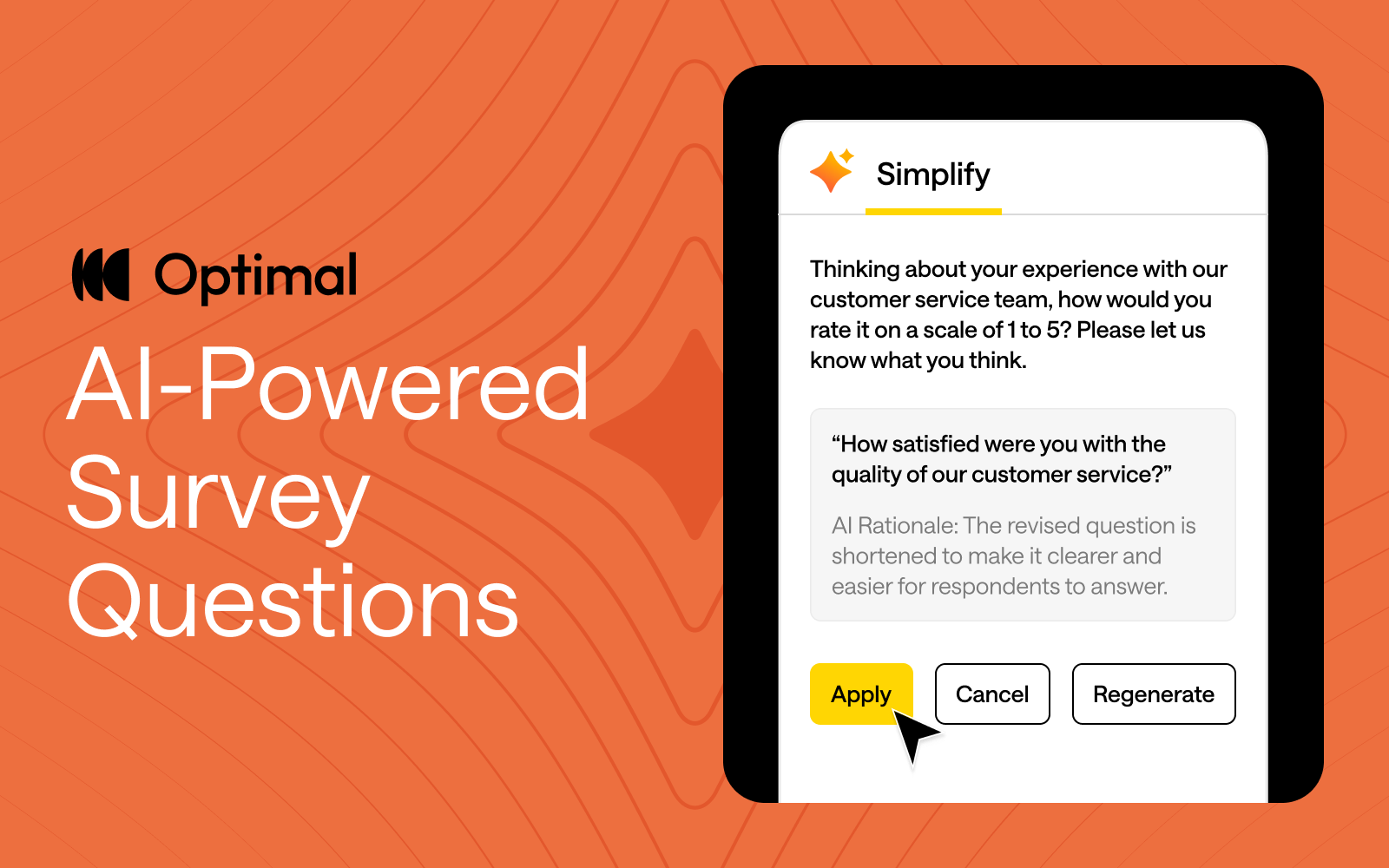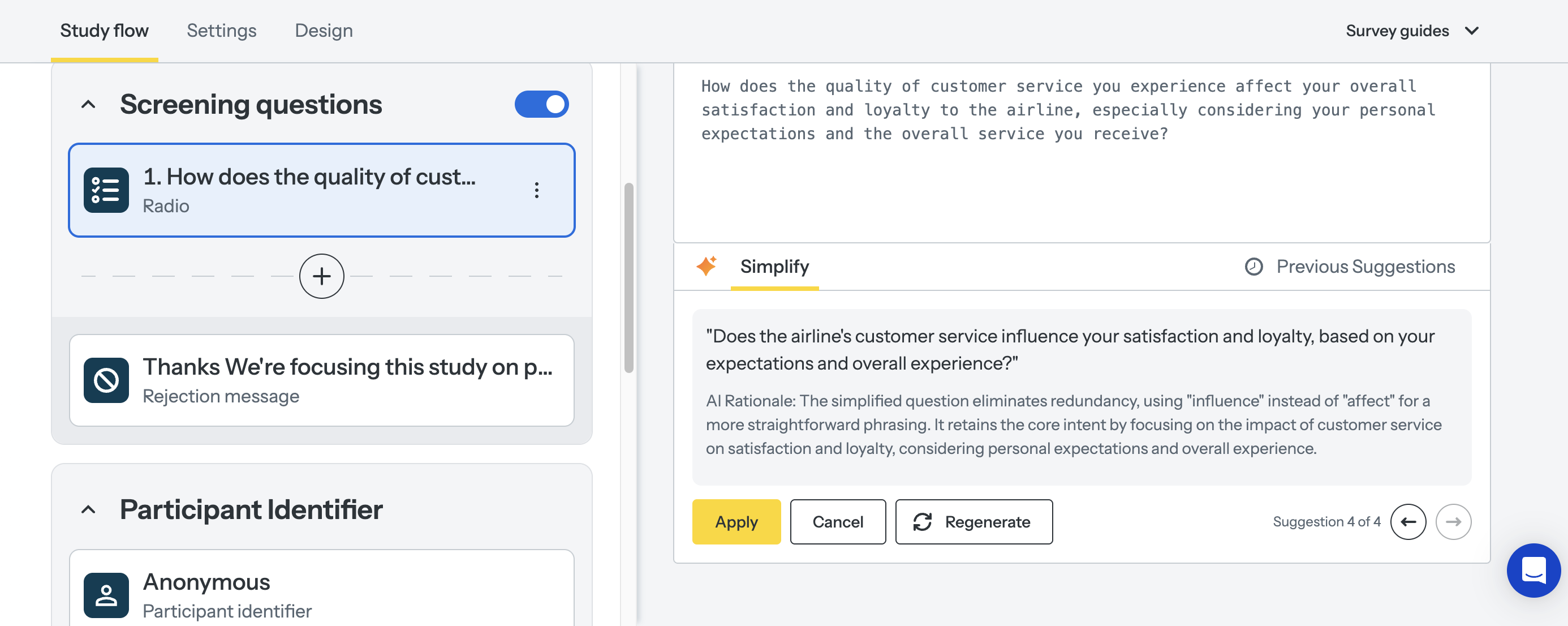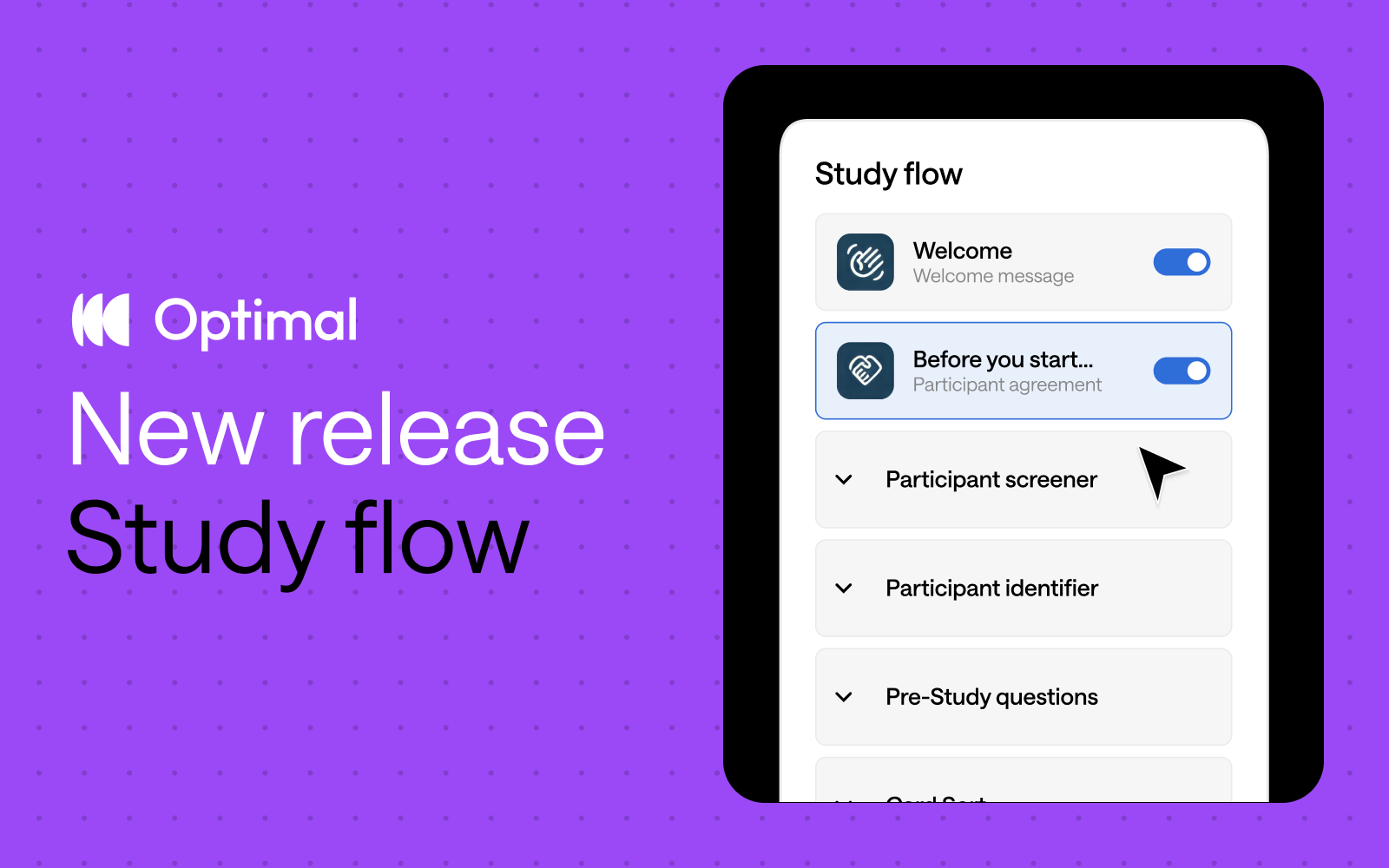
UX and product teams struggle with fragmented workflows when using traditional survey-only platforms like SurveyMonkey. Teams end up juggling multiple tools for surveys, usability testing, information architecture, and participant recruitment, creating data silos and ballooning costs.
Optimal unifies the entire UX research workflow in a single platform with unlimited seats, integrated recruitment, and purpose-built UX tools.
Beyond Surveys: Complete UX Research vs Single-Method Tool
SurveyMonkey does one thing well: Surveys. It's built for market research, employee feedback and event registrations. But most UX teams need additional methods to complete their research including: card sorting, tree testing, prototype testing, and usability studies. SurveyMonkey offers none of these, forcing you to purchase additional platforms.
Optimal provides the complete UX toolkit. Surveys, card sorting, tree testing, first-click testing, prototype testing, and interviews, all in one platform with integrated analysis.
17 years of UX expertise. Optimal isn't a generic survey tool adapted for research. Every feature is purpose-built for understanding user behavior and optimizing digital experiences, proven by companies like Netflix and Uber.
Per-Seat Pricing vs Unlimited Seats
SurveyMonkey's per-seat model creates scaling challenges. Every new team member who needs research access means another line item in your budget. As your research practice matures and more people across product, design, and marketing want to run studies, costs multiply.
Optimal's unlimited seat model changes the economics. Pay for usage, not headcount. Whether you have 5 researchers or 50 people conducting studies across product, design, and marketing teams, the cost stays the same. No budget negotiations when a new PM wants to run a study. No choosing between cost and collaboration.
Hidden costs multiply with seat-based pricing. Beyond per-user fees, SurveyMonkey charges for responses beyond plan limits. A growing team means higher seat costs AND higher overage fees as research scales.
Unlimited seats enable research democratization. When anyone can conduct research without impacting the budget, UX thinking spreads across your organization, without procurement approvals for each new seat.
Participant Recruitment: Built-In vs Bring Your Own
SurveyMonkey requires DIY recruitment. You get distribution tools (email, links, QR codes) but no participants. You must build your own panel or purchase SurveyMonkey Audience separately, with additional per-response fees that vary by audience type.
Launch research in minutes with Optimal. Design your study, specify demographics, and recruit qualified participants immediately. No vendor coordination, no delays, no managing multiple relationships.
Quality and reach matter. Optimal's recruitment includes quality checks and access to niche audiences (healthcare professionals, developers, executives) that require expensive custom recruitment through SurveyMonkey.
Fully Managed or DIY Recruitment: Flexibility to Suit Your Needs. Optimal offers fully managed recruitment as well as DIY recruitment and an on-demand panel. Whether you prefer hands-on control or a completely managed process, we have you covered. With Managed Recruitment, our dedicated in-house team handles everything from briefing to delivery. The team sources from a global pool of vetted participants across multiple trusted providers and selects the panel to ensure that you can quickly connect with your target users. Need to refine targeting mid-project? No problem. We’ll refine your criteria seamlessly to keep your study on track, no matter the changes.With SurveyMonkey, you’re left to build your own panel or purchase SurveyMonkey Audience separately, with extra per-response fees based on audience type, which can quickly escalate costs.
Advanced Targeting: Precision Recruitment for Your Exact Needs. At Optimal, we empower you with the ability to recruit precisely the audience you need, even for niche or hard-to-reach groups. Unlike SurveyMonkey Audience, where targeting is limited to preset criteria, Optimal Managed Recruitment gives you the flexibility to create custom, free-form targeting criteria. Whether you're seeking healthcare professionals, developers, or executives, we’ll ensure you get the exact participants required to deliver actionable insights.
Transparent, All-Inclusive Pricing: No Hidden Fees, No Surprises. Optimal has no hidden recruitment fees or per-question charges. The cost of recruitment is all-inclusive, with no additional costs for screening questions or response limits. By contrast, pricing can quickly add up with SurveyMonkey’s additional costs for screening questions, question types, and length of surveys. As an example, for matrix/scale questions, each row of a question counts as a separate question, increasing the overall cost.
Optimize Your Screeners: Expert Support for Better Results. Optimal's Managed Recruitment helps you optimize your screeners for free. Our team ensures that your screeners filter participants effectively and can even help you write them if needed. We optimize for quality and feasibility, ensuring the best-fit participants.
Why Choose Optimal?
SurveyMonkey excels as a general-purpose survey platform, but UX and product teams quickly hit its limits. Per-user pricing and panel recruitment costs scales expensively, there are no UX-specific research methods, and recruitment requires separate coordination.
Optimal delivers more value for less:
- Unlimited seats vs per-user fees
- Fully Managed or DIY Recruitment flexible options to meet your needs
- Complete UX toolkit including surveys, usability testing, card sorting, and more
- Purpose-built for UX with 17 years of research expertise
For teams serious about understanding users and building better products, Optimal eliminates workflow complexity while providing significantly more capability per dollar.
Ready to see the difference? Start your free trial.








